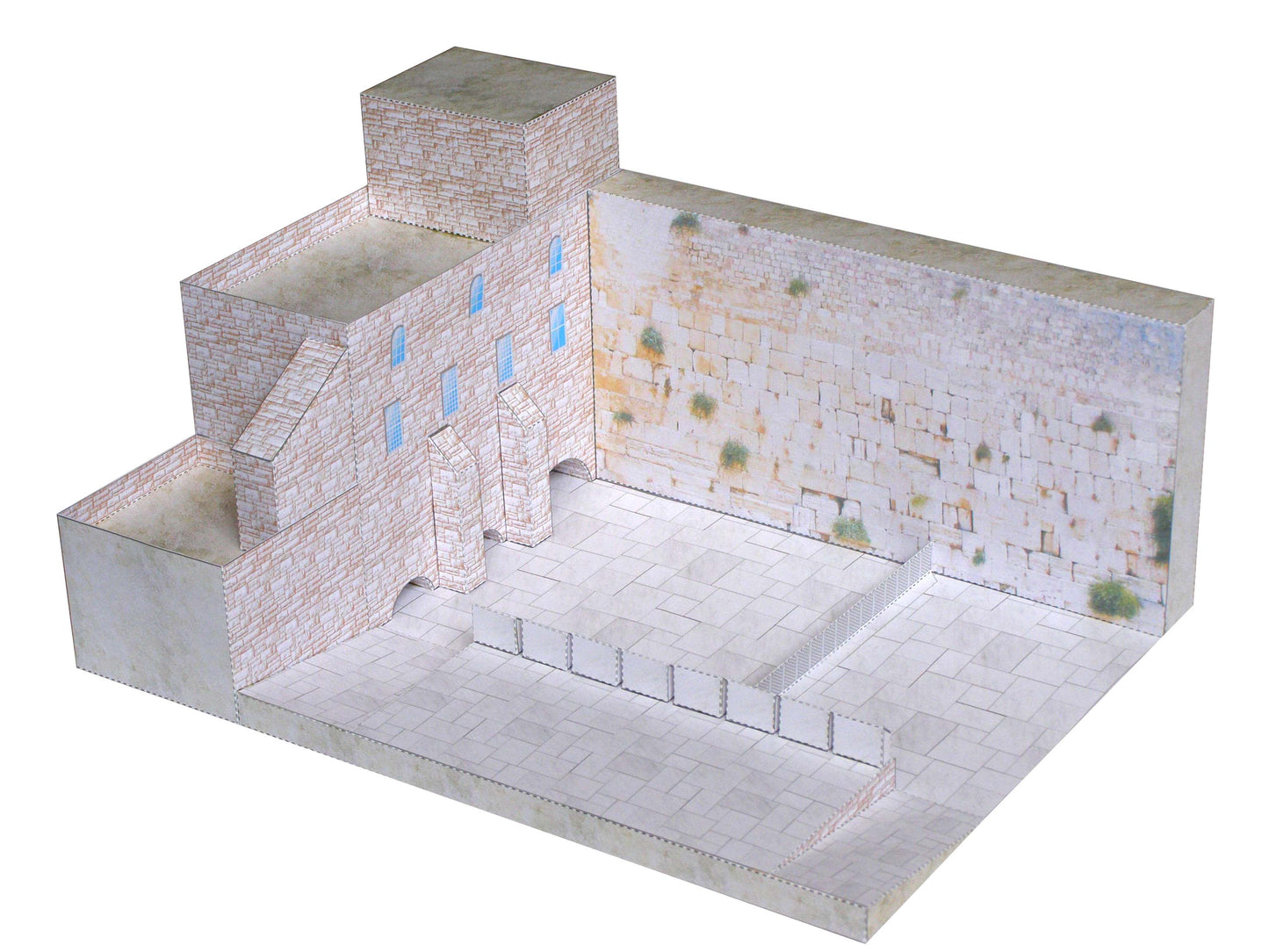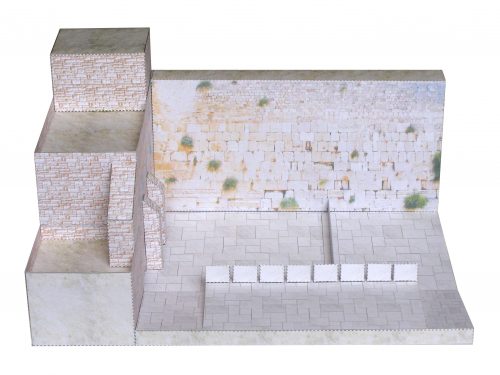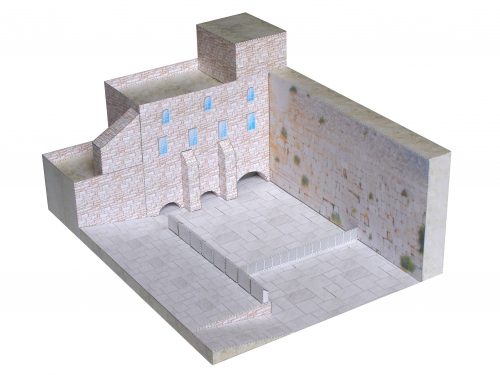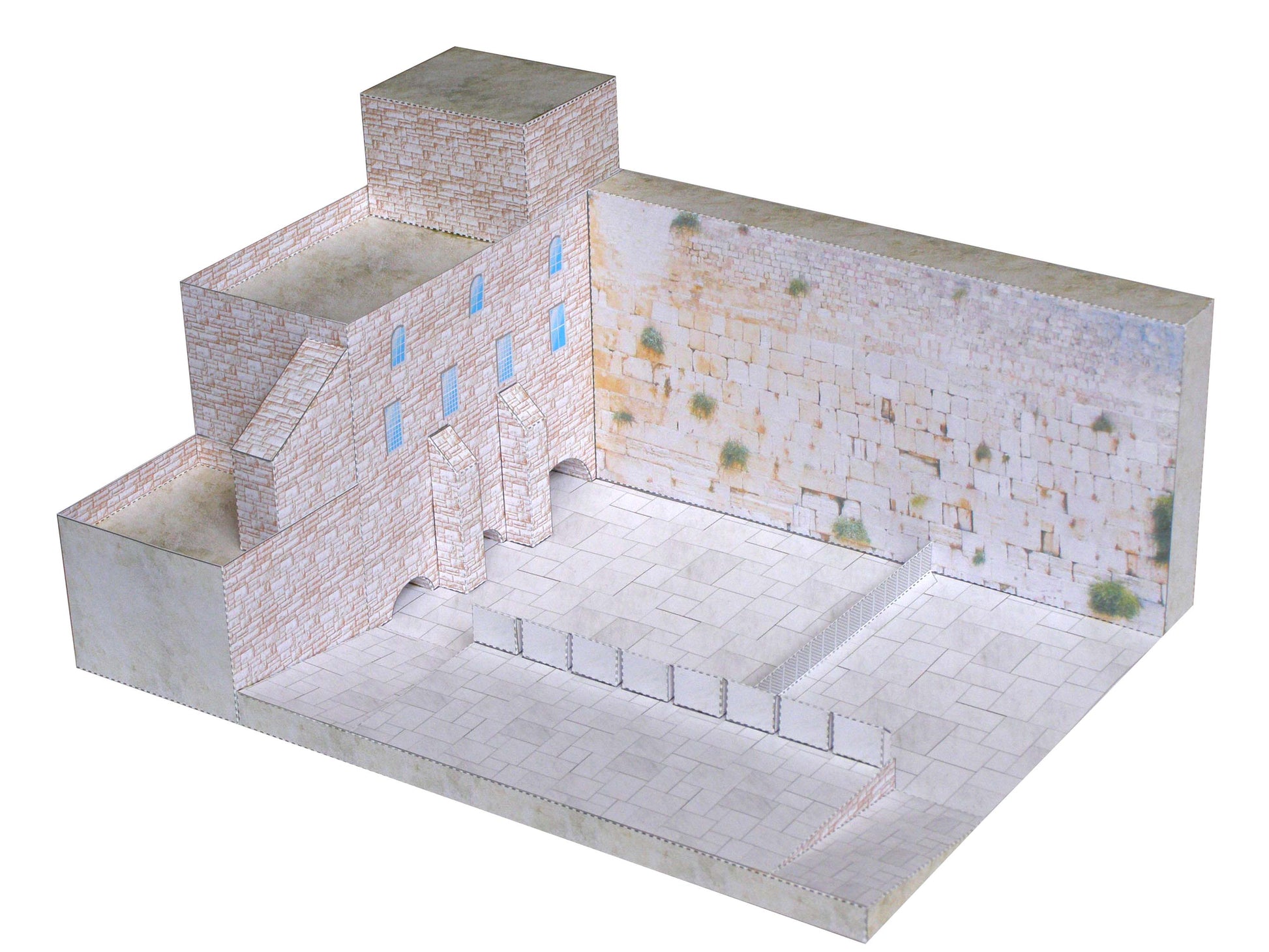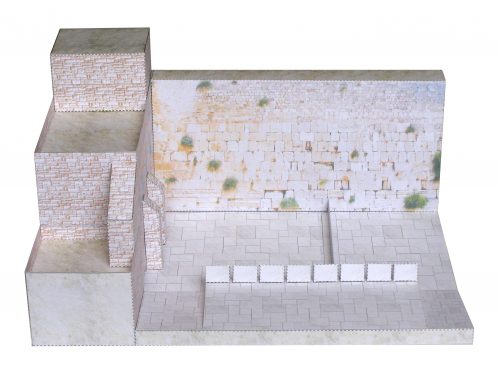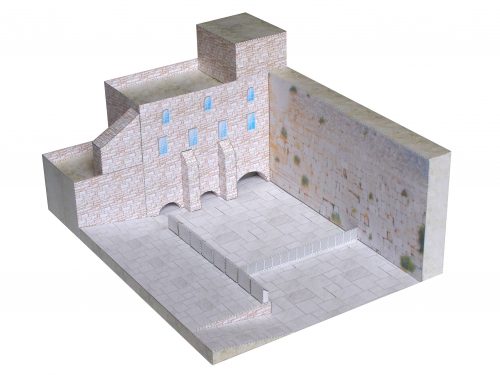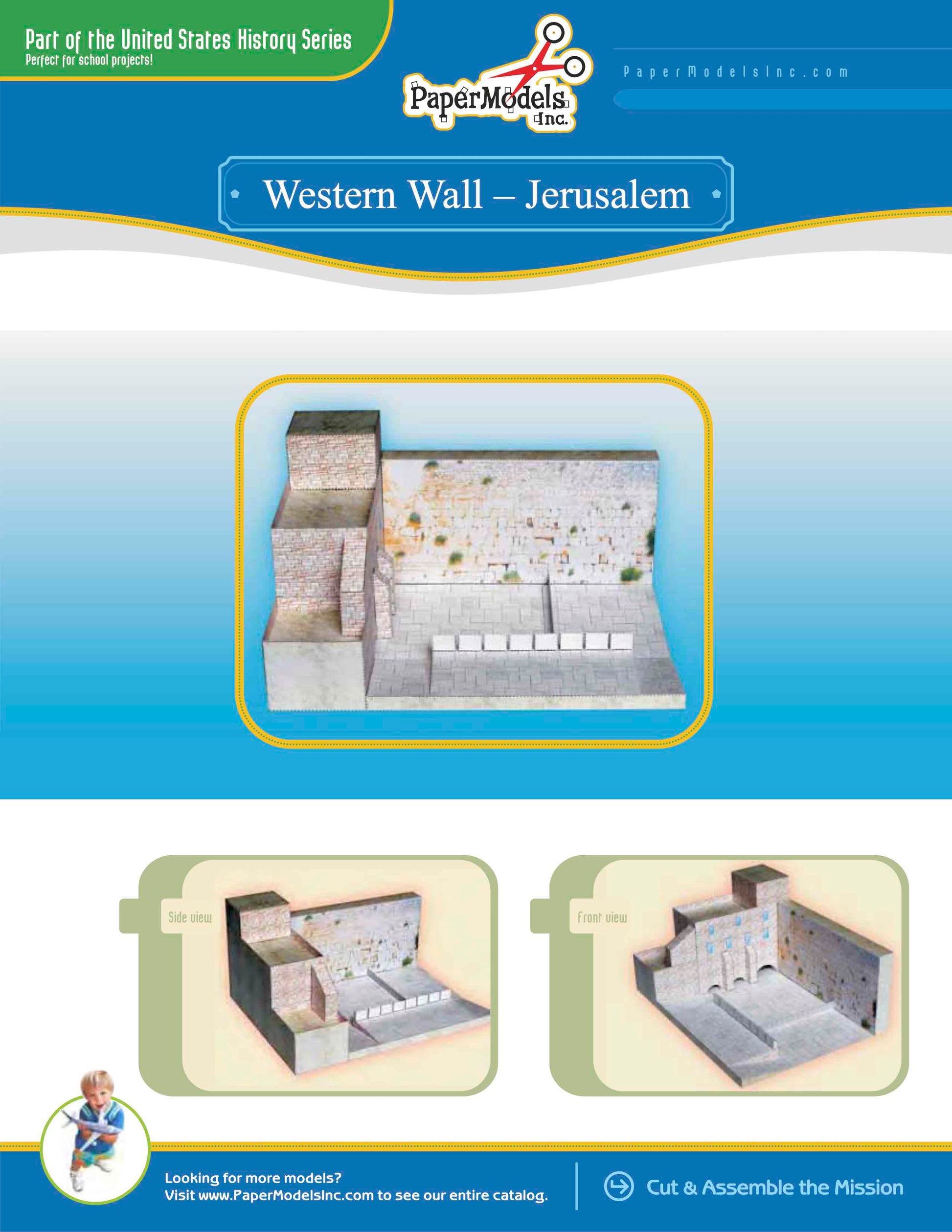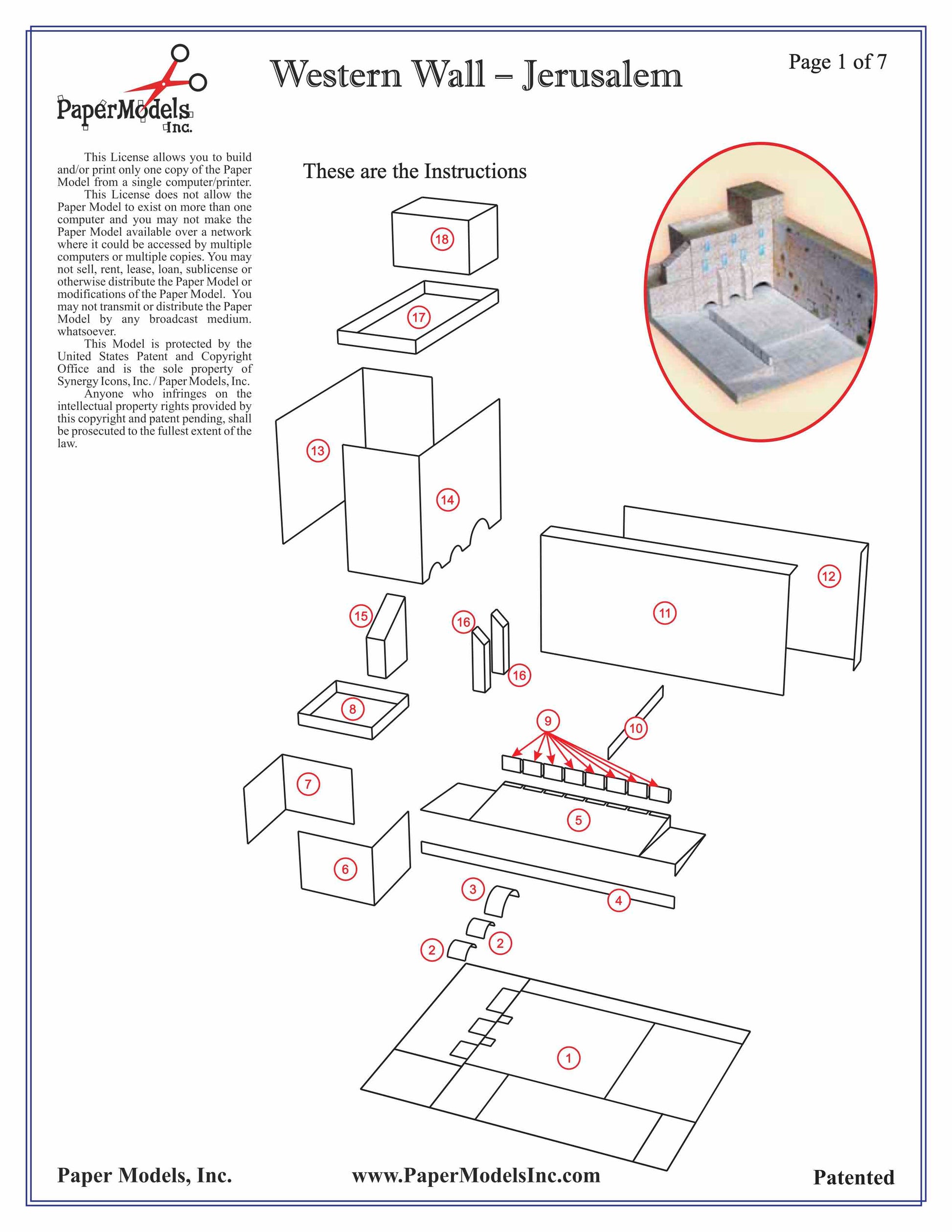Western Wall - The Kotel - Jerusalem - Paper Model Project Kit
Western Wall - The Kotel - Jerusalem - Paper Model Project Kit
Couldn't load pickup availability
🌟 Welcome to Paper Models Online – Your Shortcut to Academic Excellence! 🌟
Are you tired of stressing over last-minute school projects? Look no further! Paper Models Online is here to make your academic life a breeze.
🚀 Why Choose Us?
At Paper Models Online, we understand the pressure of looming deadlines and the desire for that coveted "A" grade. That's why we've crafted the perfect solution for you! Whether you're a student aiming for extra credit, a parent looking for quality time with your kids, or just someone in need of a break from the chaos, our paper models are your ticket to success!
💻 Instant PDF Download OR Pre-Printed & Shipped
You're in control! Choose from our instant PDF download, starting at just $9.95 for the 7"x10" size or $11.95 for the 10"x13" size.
Print it on your home or office printer using regular paper, or opt for the hassle-free pre-printed option. We'll ship it directly to your doorstep for a flat $5 fee via USPS First-Class Parcel, ensuring you get it in 1-3 days!
✂️ Easy Assembly, Maximum Impact
With just a pair of scissors, some glue, and an hour of your time, you can turn these paper sheets into stunning three-dimensional architectural replicas or complete science projects. The images on our website are real models made from our kits, and we even provide a history to help you craft an impressive report.
🎨 Unleash Your Creativity
Not into mission kits? No worries! Our models double as templates for your creative genius. Paint, trace, adjust sizes—your imagination is the only limit! Create a custom masterpiece that reflects your unique style and personality.
🛒 The Buying Process Made Simple
- Choose Your Size: 7"x10" or 10"x13"
- Choose Your Delivery: Instant PDF download or pre-printed and shipped
- Purchase Your Model: It's that easy!

📦 Typical Kit Sample
Each kit includes 8 to 18 pages, providing everything you need to bring the model to life. An "exploded view" guides you through assembly, and a complimentary history adds that extra touch for your report. Impress your teacher not just with creativity but also with your research skills!
Don't let deadlines stress you out. Choose Paper Models Online for your next school project, and let us be Your Best Way To Get An "A"! 🌟
 |
 |
 |
| Exploded View | Sample Pieces | Finished Model |
Free History For Your Report
The Western Wall
The Western Wall is a large retaining wall located in The Old City of Jerusalem in The State of Israel (sometimes referred to as Occupied Palestine). Also known in Hebrew as “HaKotel HaMa’aravi” and in popular culture at times as “The Wailing Wall” (a non- politically correct term referring to the wailing of Jews mourning the destruction of the Temple), the Western Wall’s massive stone blocks date from the Second Temple Period (516 BCE-70 CE) and is said to be the closest location that Orthodox Jews can come to the location of the former Jewish Temple.In 70 CE, the Roman Emperor Titus destroyed much of Jerusalem when the Jews revolted against the Romans. The Temple was destroyed, as were much of the retaining walls surrounding Temple Plaza, with the exception of a small portion of the western retaining wall. The viewpoint of the two sides is interesting concerning this small portion that was left in place: Titus wanted it left to be a solemn reminder to the Judean empire that Rome had conquered them; the faithful Jews saw it as a glimpse of the promise of God to rebuild the Temple. While the remaining retaining walls were rebuilt around the large Herodian cisterns that remained, the Jews recognized the western retaining wall to being the closest proximity to the now-destroyed Holy of Hollies, and it became a place of prayer for the Jews and for praying of the rebuilding of the Third Temple.
The Western Wall is also the closest many Jews can come to the location of the Holy of Hollies, even today, as is dictated by Rabbinical Jewish Law. Due to the Muslim occupation of the Temple Mount (including Dome of the Rock), most Jews (depending upon which rabbinical law they follow) are forbidden from walking on the Mount itself; nearly all Jews are prohibited by their law from entering the courtyard now occupied by Dome of the Rock, since that was the location of the old Temple.
The Western Wall remained a contested site, even with Muslims at various points in history claiming religious ties to the Wall as well; seeing as how King Solomon is viewed as a prophet of God in their faith. In the 1500’s, the Ottoman empire cared for the Western Wall of Temple Mount, and also took great care to reconstruct a massive wall that encompassed the entire city of Jerusalem.
Further controversial history of the Western Wall does not continue until 1917, when the British took control of the Palestinian territories (including Jerusalem). In 1929, a massive slaughter of sixty-seven Jews in the City of Hebron occurred by the Palestinian civilians because of claims that the Jews were about to attack Temple Mount and destroy Dome of the Rock and reclaim the land. The violence spilled out into Jerusalem, and it was not until a mandate handed down by The League of Nations settled the fact that Jews have free access to worship at the Western Wall, but the Wall itself and the relatively-new Moroccan Quarter built in front of it were all the property of the Muslim Waqf. Jews were allowed access to prayers but could not blow the loud Shofar instrument; and Muslims could not cut off access to the Wall.
Everything changed, however, in the 1948 Arab-Israeli War, when the Western Wall and the Mount were taken under control by the Jordanian Arab Legion; for a period Jews were not allowed access to the Wall for prayers. Eventually, however, Jews were allowed to come to pray at the Wall, but new Muslim development in the Old City forced houses and development right to the foot of Mount Moriah; and access to the Wall was difficult, and only 100 feet of the Wall was exposed for prayers and use.
With the United Nations-governed creation of The State of Israel in 1948, along with the 1929 Hebron Massacre, a new community of Jewish defense grew; this grouping of civilians and militants grew to become the primary military force of the new State of Israel. After careful planning, the Israeli Defense Forces conquered all of Jerusalem, including the Western Wall and Temple Mount, in the 1967 Six Day War. In retribution for the demolition of the Jewish Quarter in the 1948 Arab-Israeli War, the State of Israel destroyed the Moroccan Quarter facing the Western Wall a mere four days after taking over control of the Old City. A large plaza was built in place of the Moroccan Quarter. This construction and archeological work also revealed that the Wall ran much deeper than previously believed; and some larger stones were unearthed. Also discovered were the Western Wall Tunnels, and underground tunnels leading into the large cisterns built by Herod the Great.
Today Jews from around the world come to the Western Wall to pray; and many dignitaries and heads of state visit the Wall to pay their respects to Israel and the ages-old Jewish conflicts around the globe. However, in an effort to obtain international peace and goodwill, The State of Israel has agreed to allow the Muslim Waqf to retain control of the existing Muslim holy sites on the Temple Mount itself, including Dome of the Rock, while the State of Israel retains access to Temple Mount and control of the Western Wall.
This agreement has worked well, until early in the 21st century, when Muslim work on a mosque on the site resulted in shifting of the very foundation of Temple Mount. Also, in 2004, a snowstorm in Jerusalem led to the partial collapse of an earth mound that served as access to the Temple Plaza from the Western Wall Plaza. In February 2007, work began on a new, permanent ramp leading to the Temple Plaza, but the Waqf claimed the archeological work being done was really a cover by the State of Israel to destroy their holy sites from underground. Despite all of the conflicts, the Western Wall can usually be visited under tight security and accessed from several points in the Old City, as can Temple Mount, though violent eruptions are frequent and show no sign of ceasing.
© Copyright – Paper Models, Inc. – All Rights Reserved
Share
